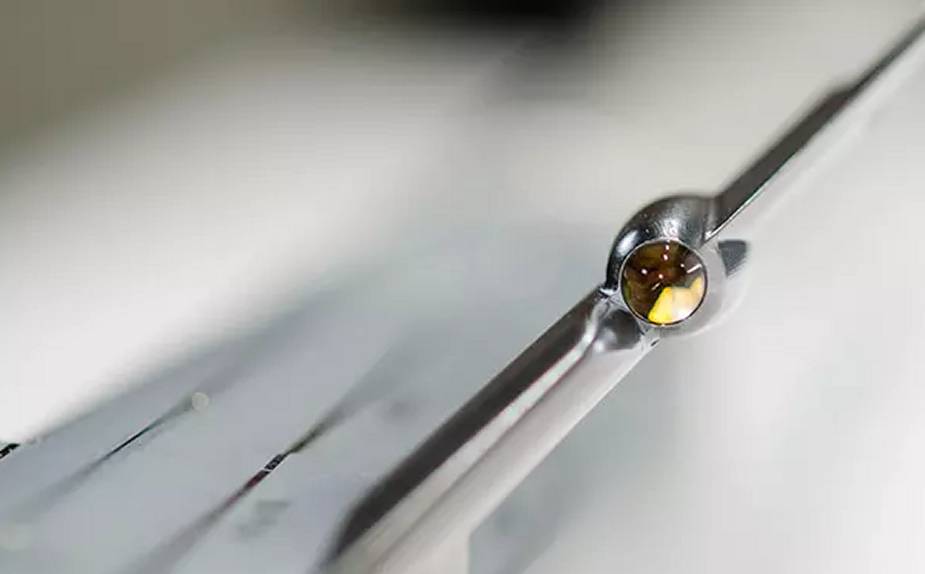Breaking news
US Army getting experimental anti-drone weapons tested by Ukrainian army.
As reported by Sam Skove in Defense One, SAIC is among contenders for a crash U.S. Army effort to help Ukraine to fight Russian drones, some (most?) of them being made in Iran.
Follow Army Recognition on Google News at this link

BAE Systems' APKWS kit includes advanced Distributed Aperture Semi-Active Laser Seeker (DASALS) optics located on all four guidance wings, which are protected by wing-slot seals prior to firing, avoiding adjacent fire damage that can interfere with a nose mount seeker. Once the rocket is fired, the APKWS kit’s wings deploy and the optics lock on to designated targets, guiding the rocket to the target (Picture source: BAE Systems)
On April 4, the U.S. Department of Defense announced a large package of military aid to Ukraine, including what it called “10 mobile C-UAS laser-guided rocket systems”. That follows a January competition held by the U.S. Army, which was seeking a system to fight off Iranian-made Shahed-136 suicide drones, Sam Skove writes. SAIC, which participated in the competition, is in the running to send ten of its weapons to Ukraine, a company representative told Defense One on the sidelines of the Association of the U.S. Army’s Global Force Symposium last week. Contracting documents provided by the U.S. Army indicate that the test objective was to destroy Class 3 drones—that is, aircraft that weigh more than 55 pounds. The Shahed-136 weighs about 440 pounds.
Ukraine has downed many of the Iranian-made drones, which cost about $20,000 apiece, but sometimes is forced to use $500,000 air-defense missiles to do so, a (very) expensive weapon to destroy somewhat cheap targets.
The U.S. Army documents say a winning design should be ready to ship to partner nations within 30 to 90 days of a contract award—roughly the amount of time between the January test and the April news that the systems were being sent to Ukraine, Sam Skove writes. In the January test, SAIC used BAE’s APKWS laser-guided rockets, which achieved a 100-percent hit rate. At less than $30,000 apiece, such rockets are cheaper than Ukraine’s larger air-defense missiles, said Greg Fortier, the vice president of SAIC’s Army Business Unit. Quoted by Sam Skove.
Combat-proven for over a decade, BAE Systems’ APKWS laser guidance kit redefines precision munitions by hitting targets with pinpoint accuracy and minimal collateral damage. The U.S. Government’s only program of record for 2.75”/70mm guided rockets, our APKWS guidance kit transforms unguided 2.75-inch (70mm) rockets like the Hydra 70 Mk 66 and others into precision-guided munitions (PGMs). Qualified on numerous U.S. Department of Defense platforms, APKWS laser guidance kits provide an affordable surgical-strike capability to multiple rotary-wing and fixed-wing platforms. Development, testing, and demonstrations are underway for unmanned (UAS) aircraft, as well as ground-based platforms. The APKWS system bridges the gap between unguided rockets and larger anti-armor munitions with commonality across the U.S. military services – Navy, Marine Corps, Army, and Air Force. The APKWS system consistently delivers pinpoint accuracy for the highest lethality available against soft and lightly-armored targets at a lower cost than other systems.
Another U.S. Anti-drone experimental system includes an M240 machine-gun mount and an electronic warfare system that can take control of a commercial drone, including any DJI-brand system not operating with advanced encryption, said Jeremy Davidson, an SAIC systems engineer. DJI drones are frequently used by both sides in Ukraine. Fortier said their system acquired the drone at over 6 miles away and struck it at 3 miles, much farther than the Army’s 1.2-mile requirement.
Defense News April 2023



















